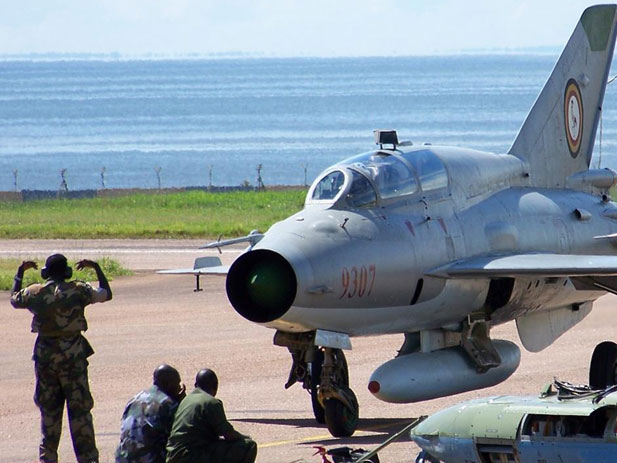
30 Ugandan pilots missing in Libya

The whereabouts of about 30 Ugandan pilots, who were flying with the Libyan air force, are unknown, following the rebels’ capture of Tripoli, Libya’s capital.
The pilots, who have been flying with the Libyan airforce since 1979, were sent to Russia for training by former President Idi Amin’s regime. A source in security circles, who was privy to the pilots’ training, said; “the majority of them were from the West Nile.”
The pilots qualified to fly the MiG-21 fighter jets and other types of aircrafts. Others trained as engineers and technicians.
But by the time they completed their training in 1979, Amin had been ousted. They were then taken to Tripoli and integrated into the Libyan airforce.
By 2001, however, some of the pilots had resigned from the Libyan air force and switched to civilian life and were contemplating returning to Uganda to rejoin their families because they were homesick, sources told New Vision.
But they were uncertain about their safety upon return, which made them to stay in Libya. This is why they are suspected to have got trapped in the war that has seen Tripoli falling to the rebels. It is, however, not clear whether they fought on the side of the embattled Libyan President, Col. Muammar Gadaffi, or that of the rebels.
Gadaffi had invested a lot in his air force that had personnel strength of about 18,000, with an inventory of 374 combat-capable aircrafts. There were 13 military air bases in Libya.
But whereas the air force was close to his heart, NATO did not give Gadaffi a chance to use air power against the rebels. The coalition forces made the Libyan air bases their first targets in their assault on Libya in March.
After the air bases were demobilised, the majority of the remaining air force fighters are said to have joined the infantry to fight the rebels alongside the mainstream Libyan forces that were still loyal to Gadaffi.
But the rebels, backed by NATO forces, have overrun Gadaffi’s forces and captured Tripoli, including the Libyan leader’s house, located in the heart of the capital.
When asked about the pilots on Thursday, army spokesperson Lt. Col. Felix Kulayigye said he was not aware of Ugandan pilots in Libya “because they were not part of the Uganda People’s Defence Forces UPDF.”
The proponents of the Ugandan pilots’ return in 2001 argued that they should return and serve the nation as experienced pilots since they were trained using the taxpayers’ money.
In that year (2001), Uganda hardly had any fighter plane pilot and the two MiG-21 fighter jets that the Government bought then were tested by expatriates. This was because Uganda’s pilots were still undergoing training in Israel at the time.
A total of 14 trainee pilots were sent for a course in piloting in Israel, Bulgaria, Ukraine and in Uganda in 2000. Six of the 14 trainee pilots had completed the four-year course by 2005.
The remaining eight were trained in avionic engineering. Each pilot was trained at S$1m (about sh2.8b); meaning the defence ministry spent $14m (sh39b) on training the 14 pilots to fly the Russian-made MiG-21 jet fighters, which were modified by Israelis.
Source: by Chris Kiwawulo - Published on: Saturday, 27th August, 2011 (www.sundayvision.co.ug)
Photo: Ugandan Pilots and MİG-21UM M (photo by vano www.RussianPlanet.net)
(30.08.2011)
|